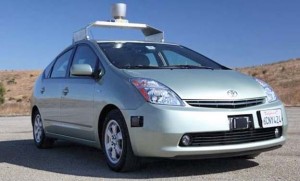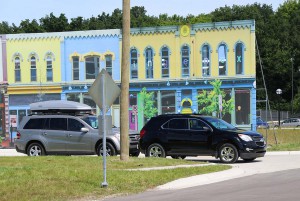Ann Arbor, Michigan will become the third and latest research center for Toyota’s research into autonomous vehicles. The Japanese automaker will partner with the University of Michigan and share the 32-acre MCity self-driving research facility also used by domestic rivals Ford Motor Co. and General Motors.
Initially wary of autonomous driving, Toyota reversed itself last year and has plunged headlong into the development of the technology, announcing a $1 billion investment to set up the Toyota Research Institute, or TRI, which already has twin bases near Silicon Valley’s Stanford University and Boston’s MIT.
“TRI was drawn to Ann Arbor because of the strength of the university,” explained Gill Pratt, the former DARPA scientist who now heads TRI, as well as “the utility of MCity and the Mobility Transformation Center, which we currently sponsor; (and) the promise of the future American Center for Mobility at Willow Run.”
Toyota also operates two major technical centers and its own test track within a short drive from where its new autonomous research center will be located in the university town of Ann Arbor.
Toyota eventually expects to have a staff of 50 at the new Michigan autonomous driving center, including wo members of the university’s engineering faculty who will join TRI in senior positions. Both will be based at the Ann Arbor office and retain part-time U-M faculty positions. Toyota has tapped a number of educators for senior roles in TRI, as well as government researchers with experience in autonomous technology, robotics and artificial intelligence.
“We are thrilled to welcome Toyota’s enhanced participation in our continually growing autonomous vehicle ecosystem,” said David Munson, the Robert J. Vlasic Dean of Engineering. “The roots of today’s automobile are in this region, and we think it’s future is here too. The research we’re advancing will fundamentally transform the transportation landscape,” he said in a statement.
The Ann Arbor area has become something of a second automotive center in Michigan, with an emphasis on engineering, rather than manufacturing. Along with the presence of the University of Michigan, it serves as home to the EPA’s emission’s testing facility, and numerous auto suppliers and manufacturers have set up operations nearby to work with that lab.
But U-M has been pushing to become a center for research into autonomous driving, as well. It opened MCity last summer, the 32-acre facility allowing researchers to operate in an environment that can simulate what self-driving cars will experience on public roads – but with much lower risk, officials explain.
(Fake city aims to bring self-driving cars to the real world. Click Here for more on MCity.)
That could prove even more important as autonomous technology moves closer to real world applications. Up until now, most research has been done in warm weather environments, such as at Google’s Austin and Mountain View, California tech centers, or in states like Nevada and Florida. Current technology has trouble operating in cold weather situations where snow and ice might obscure lane markings or confuse sensors that have trouble distinguishing between snow, ice or sand.
But with some companies hoping to have fully autonomous vehicles on the road by as early as 2020, colder, more challenging environments, such as MCity, could become more important. And the facility would allow a company like Toyota to push the envelope in winter without risking a catastrophic crash on a public road.
(Bringing autonomous vehicles to market no slam-dunk, cautions TRI’s Pratt. Click Here to learn why.)
“Although the industry, including Toyota, has made great strides in the last five years, much of what we have collectively accomplished has been easy, because most driving is easy,” said Pratt. “Where we need autonomy to help most is when the driving is difficult. It’s this hard part that TRI intends to address.”
Toyota isn’t alone in trying to expand its horizons. Google this week announced it will begin testing its autonomous prototypes in Arizona. It is also expected to move into cold weather environments in the near future.
(Paul A. Eisenstein contributed to this report.)
(For more on Google’s expanded autonomous vehicle testing program, Click Here.)



